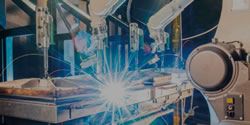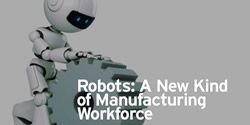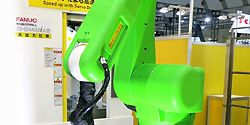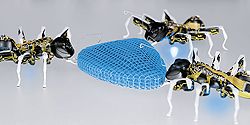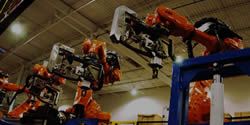The Rise of the Robots - So What?
The article will show how a 'local for local' production model - the strategy of manufacturing goods in proximity to their intended customers to promote regional self-sufficiency - can become a reality thanks to digital manufacturing.
3+2 Vs. 5-axis: What's the Difference?
Adding two axes to the conventional three axes does technically create a machine with five axes, but this 3+2 mechanism does not exactly equal a 5-Axis machine.
The Impact of Robotics in Fluid Dispense Applications in Manufacturing
Because dispense applications are so important in the manufacturing industry, companies are now looking for ways to improve the dispense accuracy and quality by investing in the latest in dispensing technology by way of semi-automated robot dispensing technologies.
What Do Robotics Mean for the Cutting Tools Industry
Friend or foe? Helper or fiend? Here's what robotics really mean for the cutting tools industry and what are the pitfalls to watch out for.
Positioning Accuracy on the Gripper of a Robot Arm
For the grinding machine producer Strausak, the robot manufacturer Stäubli and the encoder supplier HEIDENHAIN, the insertion of cylindrical tools into tool holders with a robot arm was a real challenge-and therefore a task made to measure.
Robots in Manufacturing Applications
Standard robot models are now mass-produced, making them more available to meet the ever-increasing demand. These robots are more straightforward, and more conducive to plug and play installation.
Robots: A New Kind of Manufacturing Workforce
Improving the effectiveness of small and medium manufacturers could help stimulate the economy and drive job creation. Adding robotic employees to the manufacturing mix might just make manufacturers in the United States more competitive with their counterparts in Asia.
This Factory Robot Learns a New Job Overnight
MIT Technology Review: Fanuc’s robot uses a technique known as deep reinforcement learning to train itself, over time, how to learn a new task. It tries picking up objects while capturing video footage of the process. Each time it succeeds or fails, it remembers how the object looked, knowledge that is used to refine a deep learning model, or a large neural network, that controls its action. Deep learning has proved to be a powerful approach in pattern recognition over the past few years.
“After eight hours or so it gets to 90 percent accuracy or above, which is almost the same as if an expert were to program it,” explains Shohei Hido, chief research officer at Preferred Networks, a Tokyo-based company specializing in machine learning. “It works overnight; the next morning it is tuned.”... (full story)
The making of: BionicANTs
What do ants and Industry 4.0 have in common? What challenges faced the engineers when it came to developing these delicate technology platforms? Take a look behind the scenes and dive into the world of the Bionic Learning Network... (cont'd)
Four Points You Need to Consider when Thinking About Automating or Robotizing Your Operations
If your products have regular and stable characteristics, hard automation makes sense. If however each product is different, flexible automation or robotics should be favored.
Records 1 to 10 of 10
Featured Product
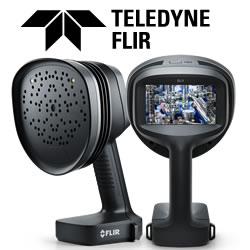
FLIR Si1-LD - Industrial Acoustic Imaging Camera for Compressed Air Leak Detection
The FLIR Si1-LD is an easy-to-use acoustic imaging camera for locating and quantifying pressurized leaks in compressed air systems. This lightweight, one-handed camera is designed to help maintenance, manufacturing, and engineering professionals identify air leaks faster than with traditional methods. Built with a carefully constructed array of MEMS microphones for high sensitivity, the Si1-LD produces a precise acoustic image that visually displays ultrasonic information, even in loud, industrial environments. The acoustic image is overlaid in real time on a digital image, allowing you to accurately pinpoint the source of the sound, with onboard analytics which quantify the losses being incurred. The Si1-LD features a plugin that enables you to import acoustic images to FLIR Thermal Studio suite for offline editing, analysis, and advanced report creation. Field analysis and reporting can also be done using the FLIR Acoustic Camera Viewer cloud service. Transferring of images can be managed via memory stick or USB data cable. Through a regular maintenance routine, the FLIR Si1-LD can help facilities reduce their environmental impact and save money on utility bills.
Manufacturing and Automation - Featured Company
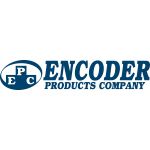
Encoder Products Company
At Encoder Products Company, we specialize in the encoders that provide you with motion feedback. EPC has been a leading designer and manufacturer of motion sensing devices for more than 50 years, we understand that each industrial automation application is different, and you need encoders that fit the needs of your applications. Our encoders are highly configurable, offer an array of shaft or bore sizes, output types, connector types, mounting options, and resolutions as high as 65,536 CPR.

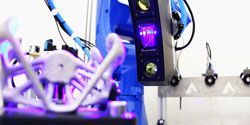
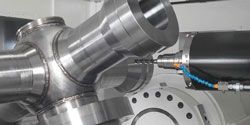

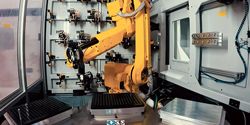
.jpg)
